Features of liquid wallpaper: how to soak and apply material
Today, on the shelves of construction stores, the assortment presents various options for finishing the walls. Often, modern finishes are affordable, work can be done independently. The listed requirements are fully consistent with liquid wallpaper. Soaking and applying them is not as difficult as it seems. The material is characterized by a variety of textures and an extensive palette of colors. It is important to carefully study all the nuances before starting work.
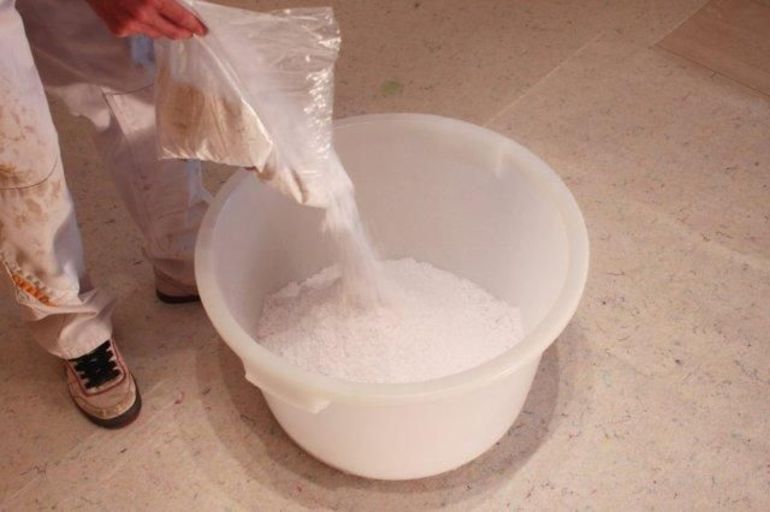
Material properties
As you know, liquid wallpaper (ZhO) can look like paper analogues, have a nap or resemble a fabric structure. The color palette is not at all limited, the main thing is to connect imagination.
Today, white material is on sale, which can be tinted if necessary, as well as colored wallpaper. In addition, by mixing several species, individual colors are created.
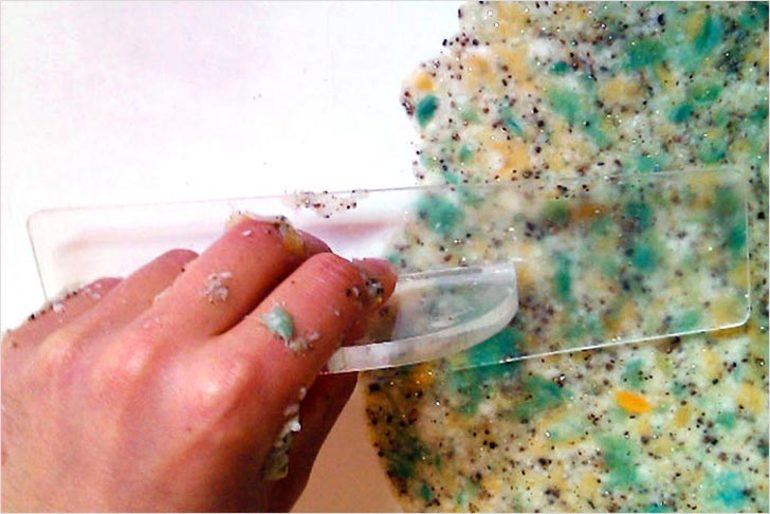
This material is made exclusively from safe components, the main of which is cellulose. Often, polyester fibers or lavsan are present in the composition. Be sure to add a binder component, if necessary - various dyes and decor elements. The latter can be presented in the form of flock, silk, synthetic or woolen threads.
Material properties directly depend on the composition. Cotton cellulose wallpaper has the following characteristics:
- Sound absorption. Of course, this indicator directly depends on the material of the walls, however, ZhO perfectly absorb sound compared to other finishes.
- Adsorbing properties. As you know, cotton and cellulose absorb moisture well. By virtue of this, it is clear that wallpapers made on their basis will have the same characteristics.
- Antistatic effect. Dust particles, small debris and other pollution will not stick to the wallpaper.
- Strengthening the thermal insulation of the room. It is important to understand that wallpaper alone is not enough, however, when the material is combined with external insulation, thermal insulation will increase several times. This is very important for families in which young children are raised.
Advantages and disadvantages
As you know, any finish has its pros and cons. ZhO are not an exception. The main advantages of the material:
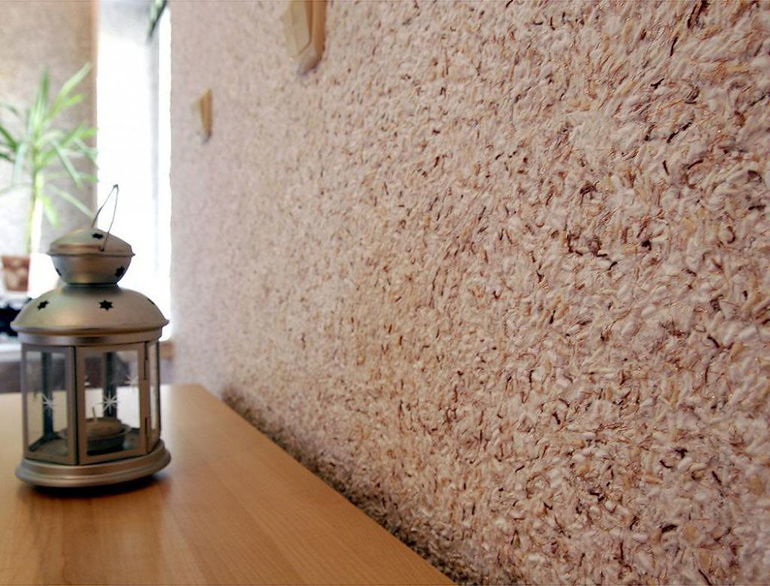
- Easy to recover. In the event of damage to a site, it will be possible to fix the problem without difficulty on their own. It is enough to soak the wallpaper with plain water, and then remove it with a spatula. To mask this area, you need to take a new batch of material. After complete drying, there will be no differences on the surface. The main thing is to use the same raw materials for repeated application as for the initial finish.
- No need to thoroughly align the walls. When using paper material, all surface irregularities remain noticeable, this does not occur when using a liquid finish. Due to the special structure of the liquid crystal, small cracks and other flaws are hidden.
- Material repels dust. If the owner plans to regularly do wet cleanings in the room, it is better to cover such wallpaper with a protective varnish.
- Easy to apply. This is an important aspect, because even a novice master will be able to finish. In the beginning, you just need to “fill your hand” in inconspicuous areas, and then proceed with processing the entire room.
Practice shows that ideal goods do not exist.Even despite a large number of advantages, such wallpapers have certain disadvantages. Some of them:
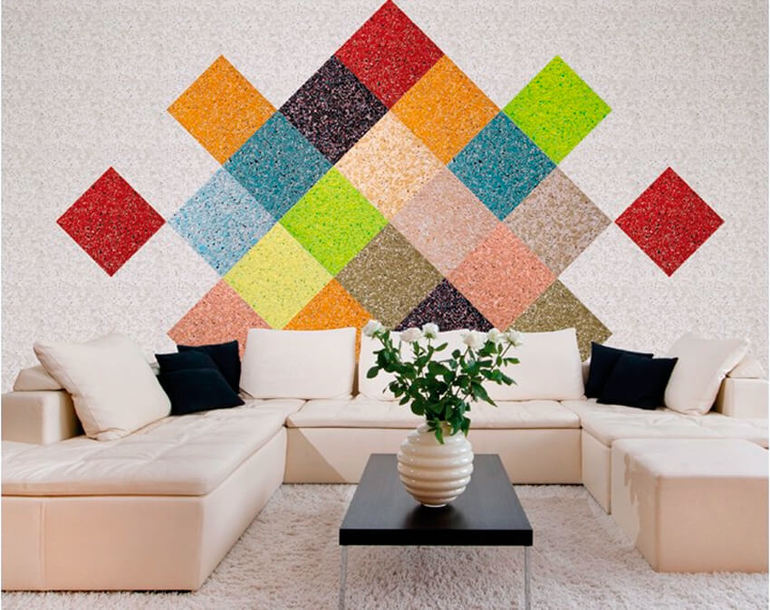
- The ability to draw spots. It is important to understand that the preparation of the walls is not required only if they have minor irregularities. Dirty and greasy stains must be cleaned and then puttied, otherwise they will appear on a fresh finish.
- Low moisture resistance. Liquid wallpaper perfectly absorbs moisture, but if the latter arrives endlessly, the coating will collapse. Due to the fact that the material is diluted with water, its excess is fraught with damage to the material.
- Price. Of course, manufacturers are trying to produce products that are affordable for customers. Today, the market offers budget options for wallpaper, but the components there are cut into large pieces, so this finish will look messy.
Varieties of liquid wallpaper
All ZhO can conditionally be divided into several large groups. Some of them:
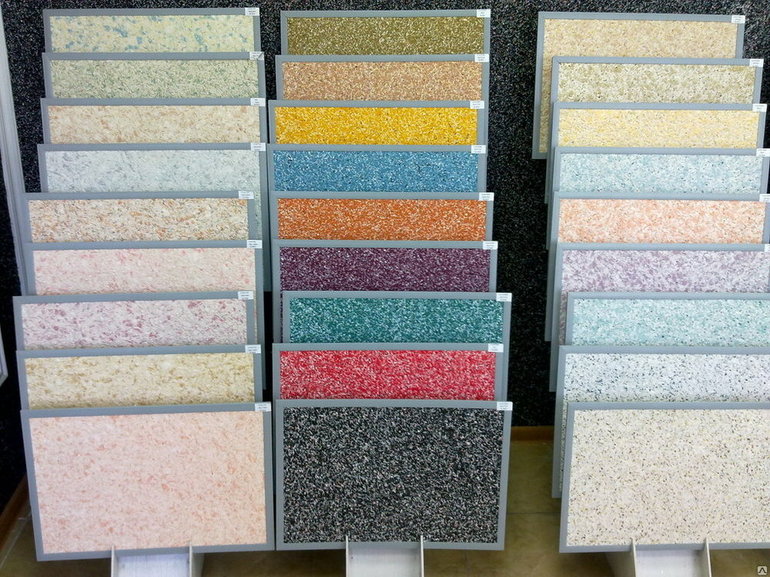
- Cellulose. For buyers, this is the most affordable option, the material is low cost. The raw materials used are wood processing products - cellulose (sawdust and other waste from the wood processing industry). The advantage of such wallpapers is the ability to completely hide minor coating defects. They are suitable for decorating walls in unheated rooms. But there are certain disadvantages: in terms of decorativeness they are significantly inferior to silk counterparts. This coating is not resistant to ultraviolet rays, resulting in burnout.
- Silk. From the name it is clear that the material consists of silk fibers. This is a very expensive finishing material, which is able to emphasize the status of the owner. Such wallpapers have excellent decorative properties, they do not fade, they are highly durable. If you are in a room, it seems that the walls are covered with expensive fabric.
- The “golden mean” for the buyer is a material consisting of particles of silk and cellulose. In addition, cotton fibers may be present in such liquid fiber.
Popular manufacturers
This is not to say that today these wallpapers are on the market in a large assortment, but there is still a choice. Most popular brands:
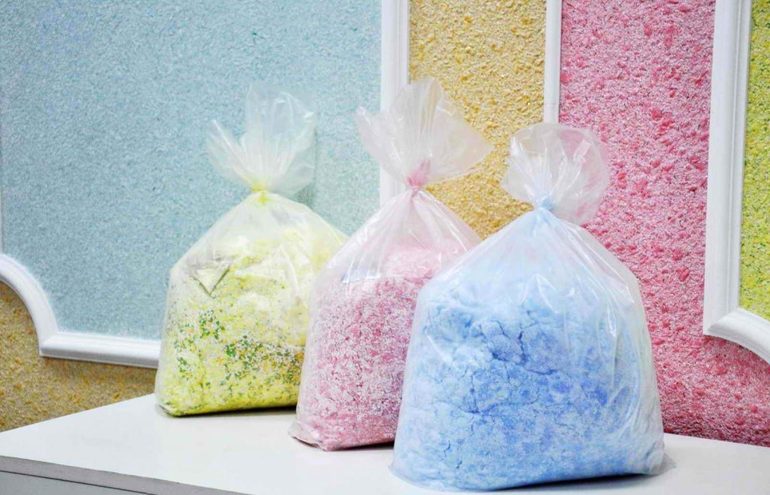
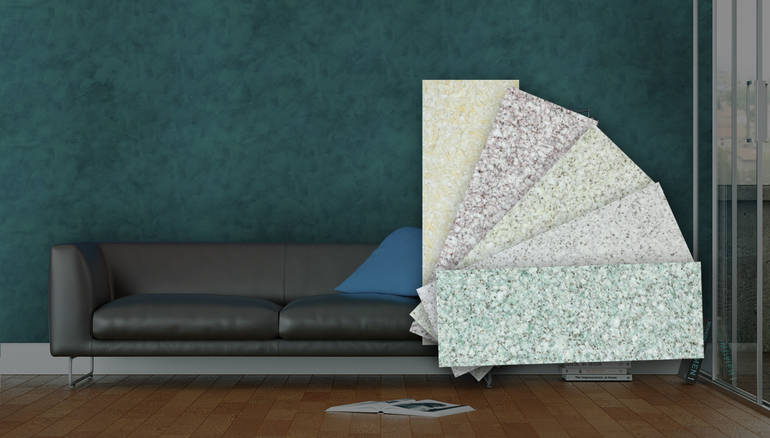
- Bioplast is a Ukrainian manufacturer producing mid-range products. These materials are economically consumed, are easy to use and in great demand among buyers.
- POLDECOR is a Polish company that produces high quality products at affordable prices.
- BAYRAMIX KOZA is a Turkish manufacturer that specializes in the manufacture of budget materials. Such wallpapers have a low price and a long period of operation.
- “Here So” is a Russian brand that produces products that are most accessible to consumers. ZhO of this brand is able to acquire every resident of the country.
- Silk plaster is the largest Russian manufacturer. The company has a large dealer network in all corners of the world. Its products are certified in many states. Wallpaper is made from environmentally friendly material using modern technology. The company offers a huge selection of colors and textures for every budget and taste.
- Leroy Merlin is a French brand that specializes in high-quality wallpaper. Products are characterized in that even after drying, they remain flexible and can withstand various tests, including shrinkage of buildings. Despite the prestige of the brand and its big name, the range includes not only expensive, but also budget materials.
- SILKCOAT is a famous Japanese manufacturer. The products of this brand have proven themselves in the ratio of price and quality.
- Senideco - wallpapers of this company are of high quality, which was achieved by hard work and modern European technologies.The French brand has become a pioneer in the creation of such a finish. It should be noted that the brand produces the most expensive products in the world.
Surface preparation
Practice shows that there are no restrictions in terms of the initial surface. It is very important to correctly carry out preparatory manipulations before applying liquid wallpaper. The latter directly depend on the base material:
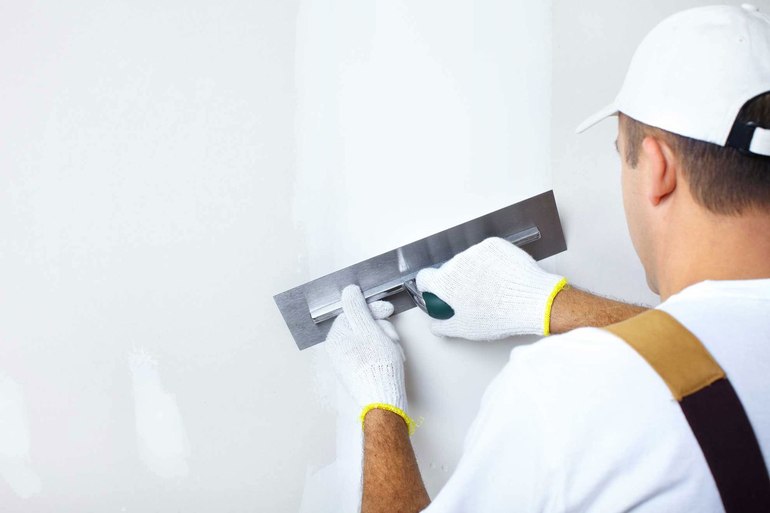
- Concrete or cement plaster. Such surfaces must be pre-puttyed. To do this, you can use the finishing putty (dry or finished composition - it does not matter). A dried surface must be treated with a primer and only then proceed with application.
- Wood or metal surfaces. If the walls consist of the listed materials, they must first be treated with alkyd paint. This is necessary in order to avoid corrosion from the water base of ZhO.
- Drywall. In this case, pre-treatment is carried out by analogy with concrete walls. First, the surface must be greased with acrylic primer, a thin layer of putty is applied, and then primed again. After complete drying, you can apply wallpaper.
Preparatory manipulations are necessary to protect the walls from damage and to give them cleanliness, especially when it comes to cement plaster. An important aspect is also the choice of soil.
Under this finish, most often use an acrylic based primer. The latter is applied under a layer of putty, and then on it. It is important to understand that the soil must be transparent or white. Otherwise, the material may change color.
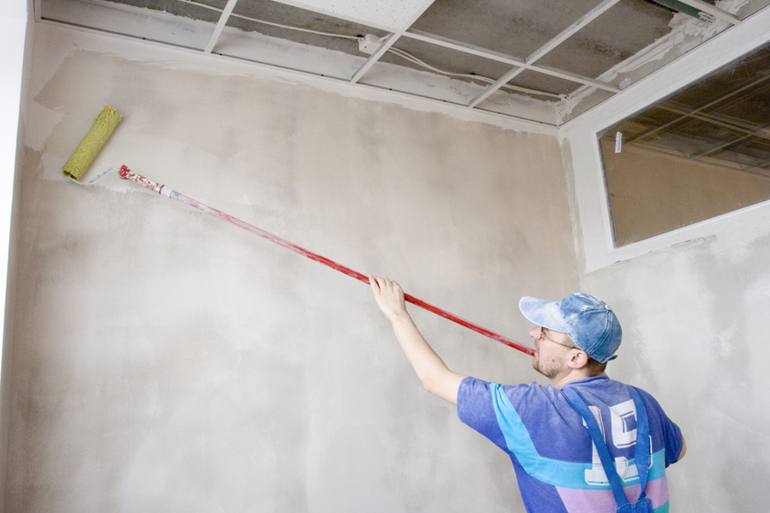
Soaking process
Due to the fact that the material is sold dry, it is very important to properly soak the liquid wallpaper. To do this is not as difficult as it might seem, the main thing is to observe the proportions indicated by the manufacturer.
First you need to pour the contents of the package into a plastic dish, then add the required amount of warm water (the temperature should not be higher than 45 degrees). With the correct ratio of liquid and material, a mixture of optimal density will be obtained.
Then you need to thoroughly mix the composition, during the manipulation should not be rushed. It is highly not recommended to use a construction mixer to minimize the risk of damage to large fractions of the solution.
At the end of cooking, the container must be covered with a lid and left for 8-12 hours. It should be noted that in a soaked form, the material can be stored for no more than five days without loss of adhesive properties. Before use, the composition must be thoroughly mixed.
Application Procedure
It is not at all difficult to process the walls with liquid wallpaper, the main thing is to evenly distribute the composition on the surface. To carry out the manipulations you need to use a spatula. The size of the latter directly depends on the preferences of the wizard.
The main task is to obtain a layer of the same thickness across the wall. It is undesirable to carry out circular movements, so you can spoil the texture of the material.
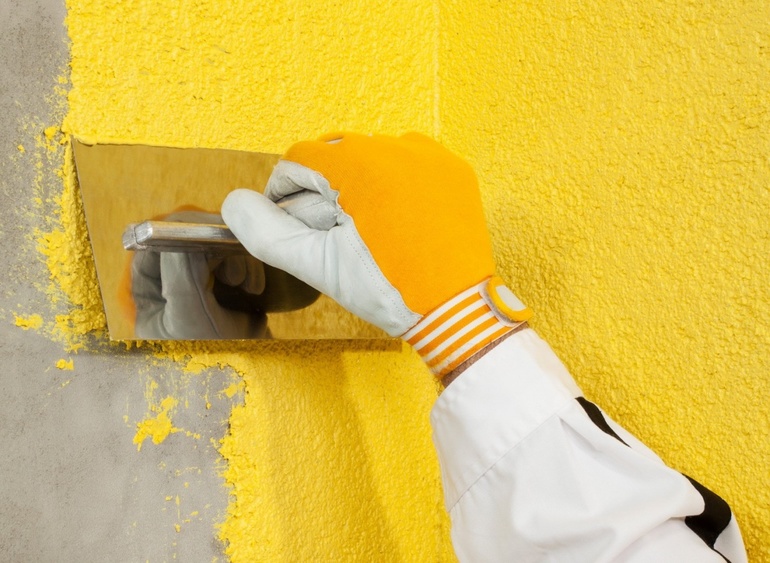
The optimum thickness is 2 mm. Too thick application may cause alignment problems; bald spots will appear on the thin layer after drying.
It is important to understand that when the solution dries, it sits on the wall, so the original layer will subsequently become thinner. This aspect must be considered when applying the mixture.
Another condition: a solid surface should be treated with one portion of the solution. This is necessary to maintain the same texture throughout the wall from one corner to another.
If you can’t work continuously, the next time you need to first soak the free edge of the previously applied wallpaper. Only in this way will it be possible to observe the similarity of texture and color scheme.
In the process of distributing the material, it is advisable to ventilate the room, the air masses will contribute to the speedy drying of the wallpaper.If necessary, you can use fan heaters.
It should be noted that the finishing material can be applied in one or in several layers, which will give the room an original design and interesting texture.
Liquid wallpaper is a convenient, environmentally friendly material that should be taken into account when planning a repair. It will give the room a spectacular look. In addition, it is quite possible to carry out the application work yourself, without involving qualified specialists.
- How to choose a vacuum cleaner taking into account the characteristics of the house and coatings?
- What to look for when choosing a water delivery
- How to quickly create comfort at home - tips for housewives
- How to choose the perfect TV - useful tips
- What to look for when choosing blinds
- What should be running shoes?
- What useful things can you buy in a hardware store
- Iphone 11 pro max review
- Than iPhone is better than Android smartphones



